Warangal Fort is situated in Warangal in the Indian state of Telangana. It existed since 12th century when it was the capital of the Kakatiya dynasty. Most of the fort is in ruins and you can see the ancient fort walls scattered around the area. Warangal fort is spread over a radius of 19 km between Warangal and Hanamakonda. It was constructed during the reign of King Ganapti Deva and his daughter Rudramma Devi who ruled until 1289 AD and then under her grandson Prataparudra II, whose reign came to be known as the ‘Golden Age’ of Kakatiya dynasty.
The fort has four ornamental gates or arches, known as ‘Kakatiya Kala Thoranam’, that originally formed the entrances to the now ruined great Shiva temple. This Kakatiyan arch has been adopted and officially incorporated into the Emblem of Telangana state after the state formation in 2014. The temple inside the fort was dedicated to the Mother Earth, Swayambhudevi.
In 1323, Muhammad bin Tughluq marched to Warangal with 65,000 mounted soldiers carrying archery, attacked the fort and plundered and destroyed the city. In keeping with tradition, he ordered the destruction of the Swayambhu Shiva temple where the state deity has been deified. All that is now visible of the temple are remnants scattered around the fort. There are many ruins of wall slabs, brackets and ceiling panels, which are exhibited in the outdoor museum.









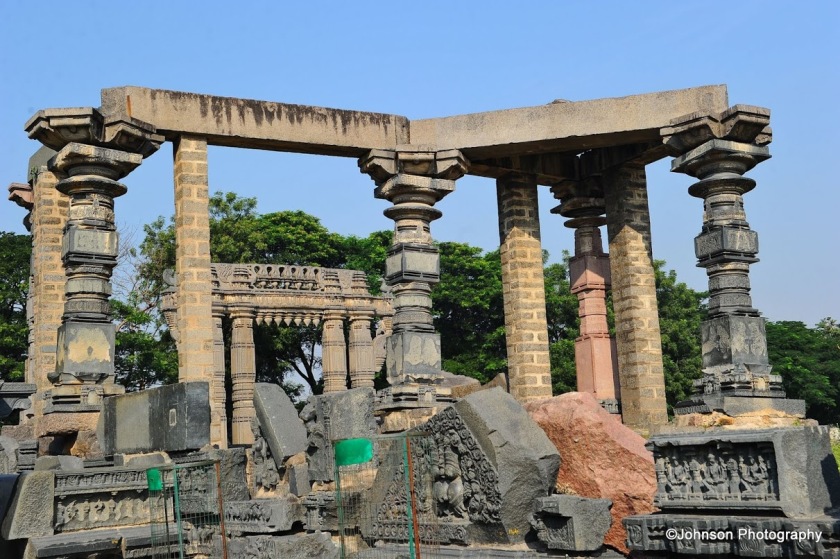
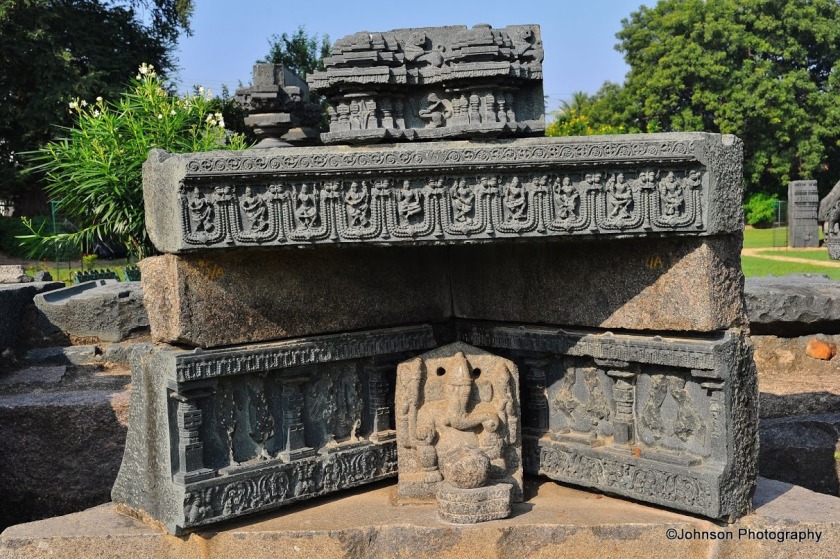










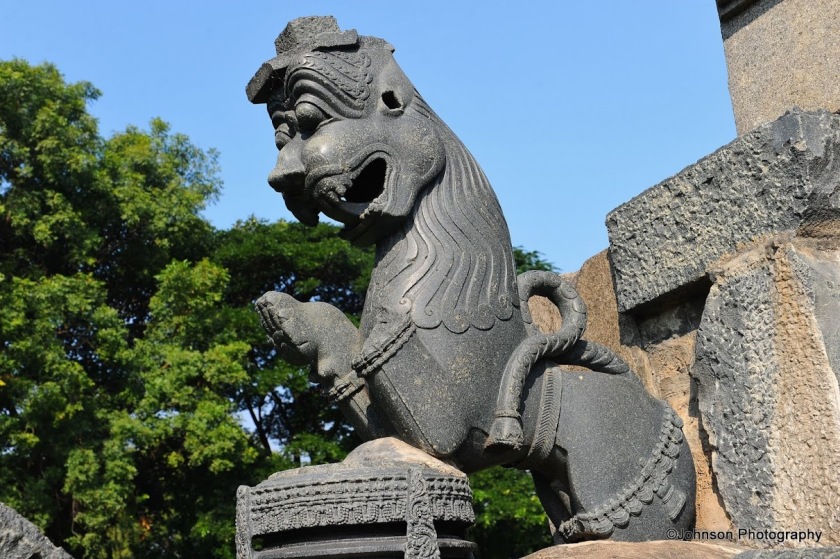




Within 150 meters of the archaeological zone is the Kush Mahal, which is a public hall built in the 14th century by the Delhi Sultans, who had captured the fort. The mahal which is rectangular in shape is built with huge sloping walls, sliced by six arched openings on each of its sides. There are approach steps on the northeast corner that provides access to the top of the structure, which has scenic views of the entire fort complex. Unfortunately, I didn’t take a picture of Kush Mahal (or may be it got deleted by mistake) but I have the pictures of the exhibits and also views from the top of Kush Mahal.
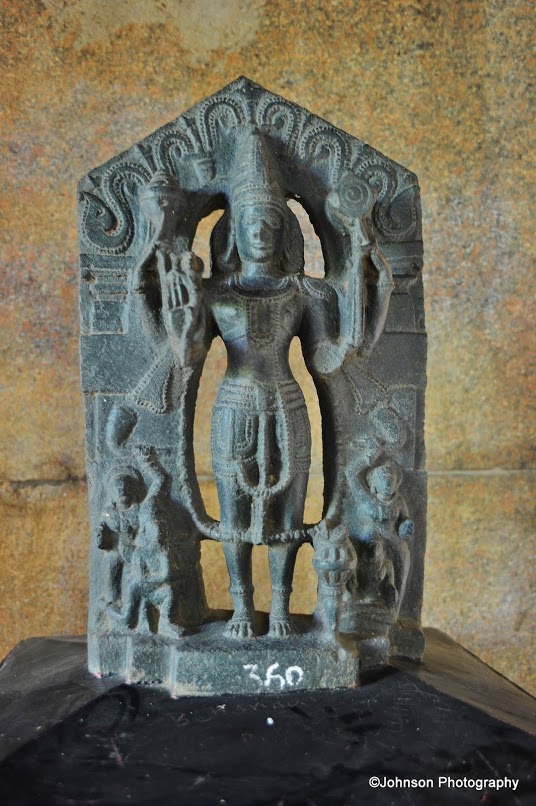





Within the southern quarter of the archaeological zone is a big water tank. Inside this tank is a distinctive natural rock formation that protrudes above the water surface. This is called locally as Ourugallu (Single Rock) in Telugu, giving the name Warangal to the fort. A small temple is built over this rock. From the top of the rock one can get the panoramic view of the surrounding area.





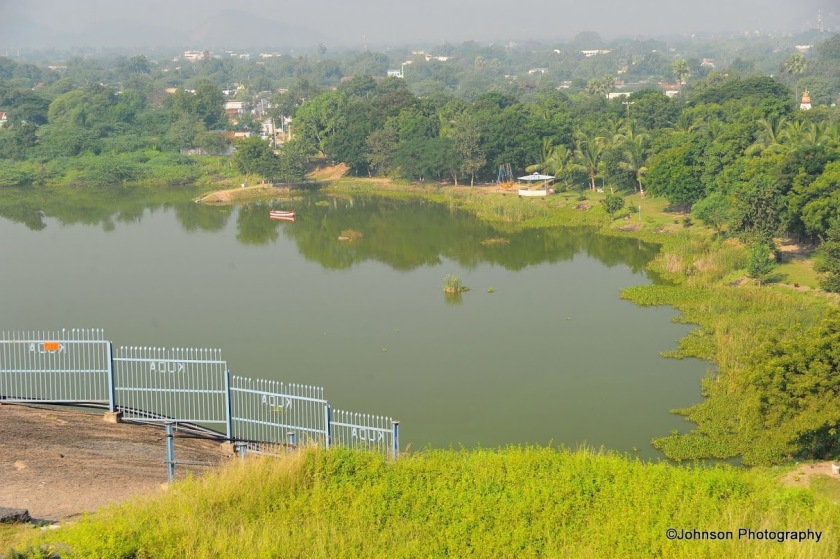



Fantastic
LikeLike
Thanks for your comment.
LikeLiked by 1 person
Thanks for your support in the underdark 😅😏
LikeLike
Incredible the amount of history that is behind these walls and relics that are left behind!
LikeLiked by 1 person
Thank you very much for your visit and the comments.
LikeLiked by 2 people
Are the ditches to channel water so the ruins remain stable?
LikeLiked by 1 person
No, they were trying to bury cables underneath those trenches.
LikeLike
I am certainly glad that at least those remnants and relics of the temple to Shiva and Mother Earth were saved. They are beautiful–amazing carving. Lovely photos, as always. I especially like the interesting angles on the statuary and the views from above of the countryside.
LikeLike
Thanks.
LikeLiked by 1 person
This must have been a big and strong fort!
LikeLike
Yes, it was and even now one could see the remnants of the huge walls of the fort scattered around an area of 19 square kilometres.
LikeLiked by 1 person
nice imagines
LikeLike
Thanks.
LikeLiked by 1 person
One marvels at the intricate work on the remnants of the fort.
LikeLike
Thanks.
LikeLiked by 1 person
I love the relics…I feel through your pictures that I am actually there!
LikeLike
Thank you very much for your kind comments.
LikeLike
Such intricate carvings! I’ve never heard of this place – I’ve never been to India at all, but really must go some day.
LikeLike
Hope you will be able to make it sometime…
LikeLiked by 1 person
Such beautiful captures!
LikeLike
Thank you very much for stopping by my blog and commenting.
LikeLiked by 1 person
Magnificent !!
LikeLike
Thank you very much for stopping by my blog and commenting.
LikeLiked by 1 person
you are welcome.
LikeLiked by 1 person
Thanks.
LikeLike
Must be a big fort with beautiful history
LikeLiked by 1 person
Thank you for stopping by Storyteller. — Ray
LikeLike
You are welcome.
LikeLiked by 1 person